HOW TO DETERMINE IN WHICH QUADRANT AN ANGLE LIES
Subscribe to our ▶️ YouTube channel 🔴 for the latest videos, updates, and tips.
Angles in standard position are always shown on the Cartesian plane. The x-axis and the y-axis divide the plane into four quadrants
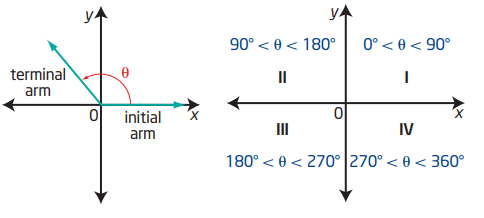
On a Cartesian plane, you can generate an angle by rotating a ray about the origin.
The starting position of the ray, along the positive x-axis, is the initial arm of the angle. The final position, after a rotation about the origin, is the terminal arm of the angle.
An angle is said to be an angle in standard position if its vertex is at the origin of a coordinate grid and its initial arm coincides with the positive x-axis.
Problem 1 :
In which quadrant does the terminal arm of each angle lie?
a) 75˚ b) 105˚ c) 225˚ d) 320˚
Solution :
i) 75˚
Since 75˚ is between 0˚ and 90˚, it is in quadrant I.
ii) 105˚
Since 105˚ is between 90˚ and 180˚, it is in quadrant II.
iii) 225˚
Since 225˚ is between 180˚ and 270˚, it is in quadrant III.
iv) 320˚
Since 320˚ is between 270˚ and 360˚, it is in quadrant IV.
Problem 2 :
Sketch each angle in standard position. State the quadrant in which the terminal arm lies.
a) 36° b) 210° c) 315°
Solution :
a) θ = 36° Since 0° < θ < 90°, the terminal arm of θ lies in quadrant I
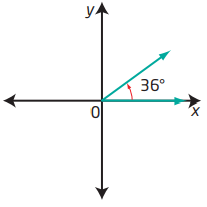
b) θ = 210°
Since 180° < θ < 270°, the terminal arm
of θ lies in quadrant III.
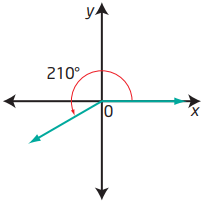
c) θ = 315° Since 270° < θ < 360°, the terminal arm of θ lies in quadrant IV.
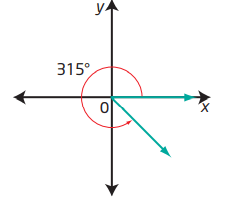
Problem 3 :
Without measuring, match each angle with a diagram of the angle in standard position.
a) 150° b) 180° c) 45° d) 320° e) 215° f) 270°
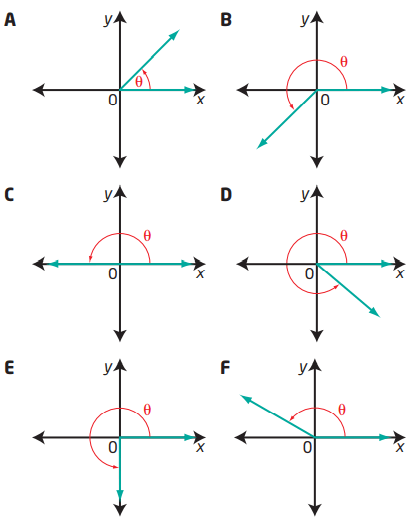
Solution :
a) 150°
Let θ = 150°
Considering θ, it lies 90° < θ < 180°. The terminal side should be in II nd quadrant.
So, option F.
b) 180°
Let θ = 180°
Considering θ. The terminal side should be at the end of II nd quadrant.
So, option C.
c) 45°
Let θ = 45°
Considering θ, it lies 90° < θ < 180°. The terminal side should be in Ist quadrant.
So, option A.
d) 320°
Let θ = 320°
Considering θ, it lies 270° < θ < 360°. The terminal side should be in IVth quadrant.
So, option D.
e) 215°
Let θ = 215°
Considering θ, it lies 180° < θ < 215°. The terminal side should be in IIIrd quadrant.
So, option B.
f) 270°
Let θ = 270°
Considering θ. The terminal side should be at the end of IIIrd quadrant.
So, option E.
Subscribe to our ▶️ YouTube channel 🔴 for the latest videos, updates, and tips.
Recent Articles
-
Finding Range of Values Inequality Problems
May 21, 24 08:51 PM
Finding Range of Values Inequality Problems -
Solving Two Step Inequality Word Problems
May 21, 24 08:51 AM
Solving Two Step Inequality Word Problems -
Exponential Function Context and Data Modeling
May 20, 24 10:45 PM
Exponential Function Context and Data Modeling